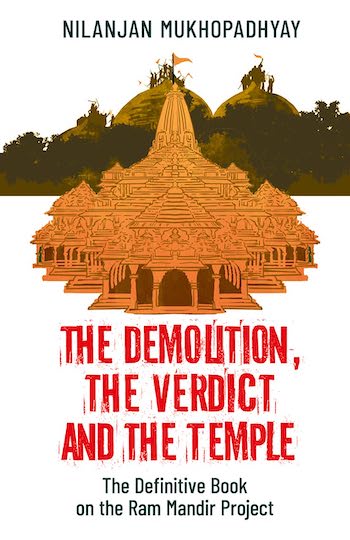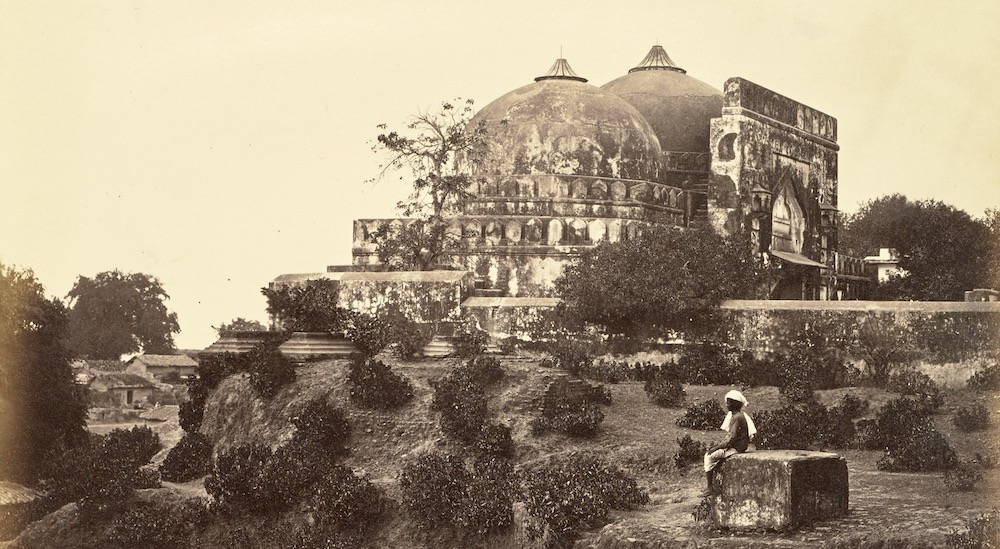Nilanjan Mukhopadhyay‘s The Demolition, the Verdict, and the Temple examines the Ayodhya controversy, highlighting its profound societal impacts, writes Syed Shadab Ali Gillani

The simmering Ayodhya controversy, centred around the disputed Ram Janmabhoomi-Babri Masjid site, has long been one of the most polarising issues in India. As Nilanjan Mukhopadhyay chronicles in his well-researched book, The Demolition the Verdict and the Temple, the agitation for a Ram temple led by the Sangh Parivar has dramatically altered the political and social landscape of the country.
Mukhopadhyay methodically pieces together the events spanning over a century that culminated in the 2019 Supreme Court verdict handing over the disputed land for a Ram temple. He incisively analyses the verdict through the lens of history, politics, law, and social psychology. A recurring theme is the weaponisation of history and mythology by Hindu nationalist forces to establish the supremacy of the majority community’s sentiments over minority rights.
The author sheds light on how the right wing successfully shaped public discourse and engineered a shift in the majority community’s self-perception—from feeling obligated to safeguard minority interests as part of India’s pluralistic democracy, to demanding subservience to the majority’s sentiments. According to Mukhopadhyay, this majoritarian impulse undermines the nation’s founding vision of “secularism, democracy and egalitarianism” established in the aftermath of partition.

By tracing the chronology of legal developments, Mukhopadhyay reveals the reluctance of the judiciary over decades to settle the dispute ultimately required a political solution. He argues convincingly that the Supreme Court verdict privileging “possessory claims” over “property rights” delivered justice on technical grounds but violated principles of equity and fairness, given the documented illegalities of the demolition.
An underlying theme is how the temple cause catapulted the BJP politically by consolidating Hindu support. Mukhopadhyay suggests the Ram Temple may not be the final chapter given the Sangh Parivar’s broader plans to reconfigure India’s identity along Hindutva lines. He implies the verdict and planned temple construction have tacitly empowered majoritarian actions to upend the status quo around other contested religious sites.
As a meticulously researched work of scholarship analysing a pivotal socio-political issue through multiple frames, Mukhopadhyay’s book makes a valuable addition to understanding contemporary India. His insights provoke introspection on how the politics surrounding Ayodhya has recast inter-community relations and the practice of secularism.
Situating the analysis in the historical and ideological evolution of the Sangh Parivar provides a critical perspective on the entanglement of religion and politics. By surfacing the wilful reshaping of public memory and history around Ayodhya, Mukhopadhyay prompts readers to reflect on the complex dynamics between myth, faith, evidence, and law in resolving such disputes.
The book is a reminder that developments around Ayodhya carry implications far beyond constructing a temple. They influence how minorities perceive their place in India, how Hindus see their identity and responsibilities as the majority, and how the spirit of democracy and diversity is upheld. Through reasoned analysis of past events and their ongoing repercussions, Mukhopadhyay’s scholarship constitutes an appeal to collectively reflect on and recalibrate the present moral and social compass of the world’s largest democracy.
Mukhopadhyay’s book highlights how the demand for a temple in Ayodhya was cleverly crafted into an issue of Indian nationalism and patriotic identity by Hindu nationalist forces like the RSS. This allowed the Ram Mandir agenda to gain widespread appeal while demonising and excluding India’s minorities, especially Muslims.
The author provides granular details on the events, actors and strategies that enabled the rise of political Hinduism, from the surreptitious placement of Ram’s idol in 1949 to the Babri Masjid’s demolition in 1992 to the 2019 Supreme Court verdict awarding the disputed land for a temple. Beyond the specifics, what is most striking is how Mukhopadhyay lays bare the insidious, decades-long project to redefine Indian nationalism from an inclusive, composite ideal to one dominated by Hindu symbolic power and priorities.

The book highlights the RSS’ distortions in framing Ram not simply as a religious deity but as a national icon whose cause all patriotic Indians must rally behind. This binary of equating Hindu causes with national causes is deeply problematic. It others India’s minorities, positioning them as enemies of the nation unless they comply with majoritarian diktats.
The greatest strength of this book is how it combines an insightful, big-picture analysis of the forces reshaping India with a lucid narrative that engages general readers. Its conclusions on the normalisation of a new, toxic Indian mindset aligned with Hindu nationalist priorities are as sobering as they are credible.
Ultimately, Mukhopadhyay’s book serves as an important cautionary tale for India’s present and future. Laying bare the contrasts between India’s founding secular vision and its majoritarian reality today, it prompts us to reflect on the directions India is taking and the grave implications for its minorities and social fabric. The history of the Ram Mandir movement serves as more than just a chronicle of a temple; it is a battle for India’s soul, one whose verdict remains unclear.
The book inspires many lines of inquiry for the reflective reader. How can India counter increasingly divisive interpretations of nationalism and reclaim an inclusive national identity? Can the exploitation of religious symbols and sites for political ends be curtailed? And how can minority rights and spaces be protected in the face of growing Hindu assertiveness backed by state power? Mukhopadhyay’s engaging history not only documents India’s path but calls on citizens to actively shape India’s future.















